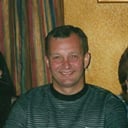When did the European Organization for Nuclear Research first power up the Large Hadron Collider?
On September 10, 2008 the Large Hadron Collider (LHC) at CERN, described as the biggest scientific experiment in the history of mankind, was first powered up in Geneva, Switzerland.
The European Organization for Nuclear Research known as CERN (derived from the name “Conseil européen pour la recherche nucléaire”), is a European research organization that operates the largest particle physics laboratory in the world. Established in 1954, the organization is based in a northwest suburb of Geneva on the Franco–Swiss border.
CERN (the birthplace of the World Wide Web) has a primary function to provide the particle accelerators and other infrastructure needed for high-energy physics research through international collaborations.
The LHC is the world's largest and most powerful particle collider and the largest machine in the world. It was built by CERN between 1998 and 2008 in collaboration with over 10,000 scientists, hundreds of universities and laboratories and more than 100 countries. It lies in a tunnel 27 kilometres (17 miles) in circumference and as deep as 175 metres (574 feet).
Physicists hope that the Large Hadron Collider will help answer some of the fundamental open questions in physics, concerning the basic laws governing the interactions and forces among sub atomic elementary objects, the deep structure of space and time, and the interrelation between quantum mechanics and general relativity.
More Info:
en.wikipedia.org

